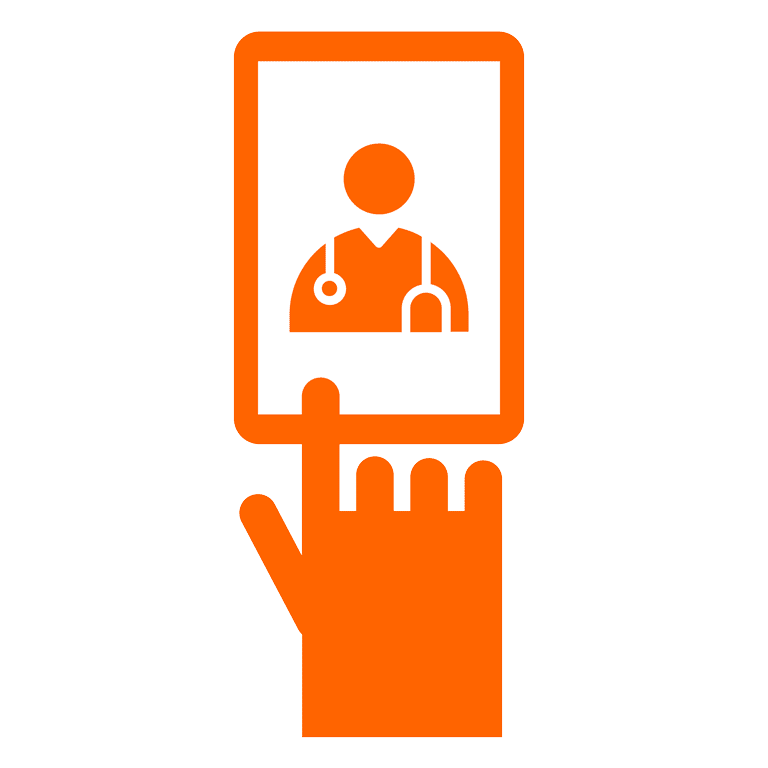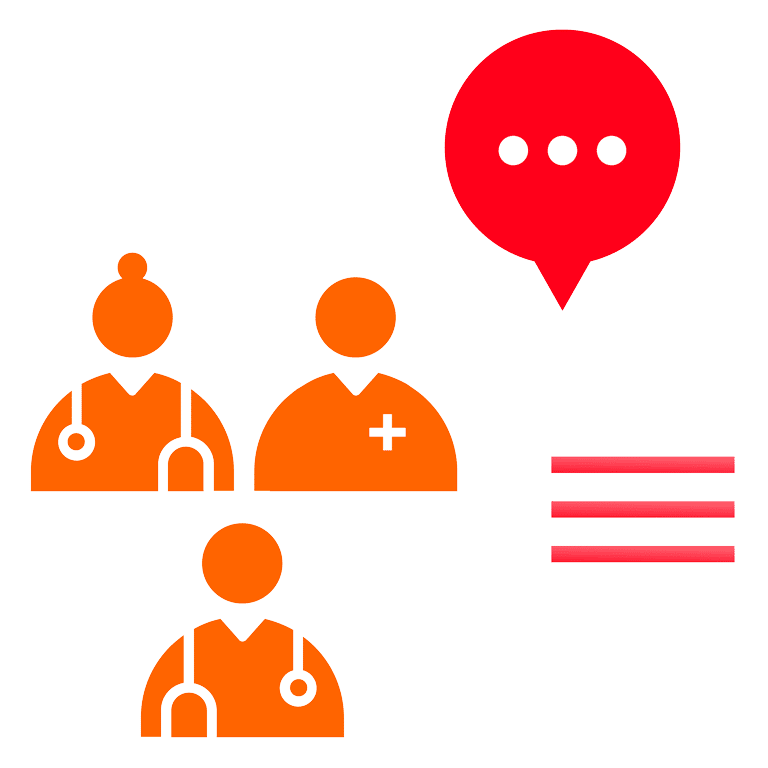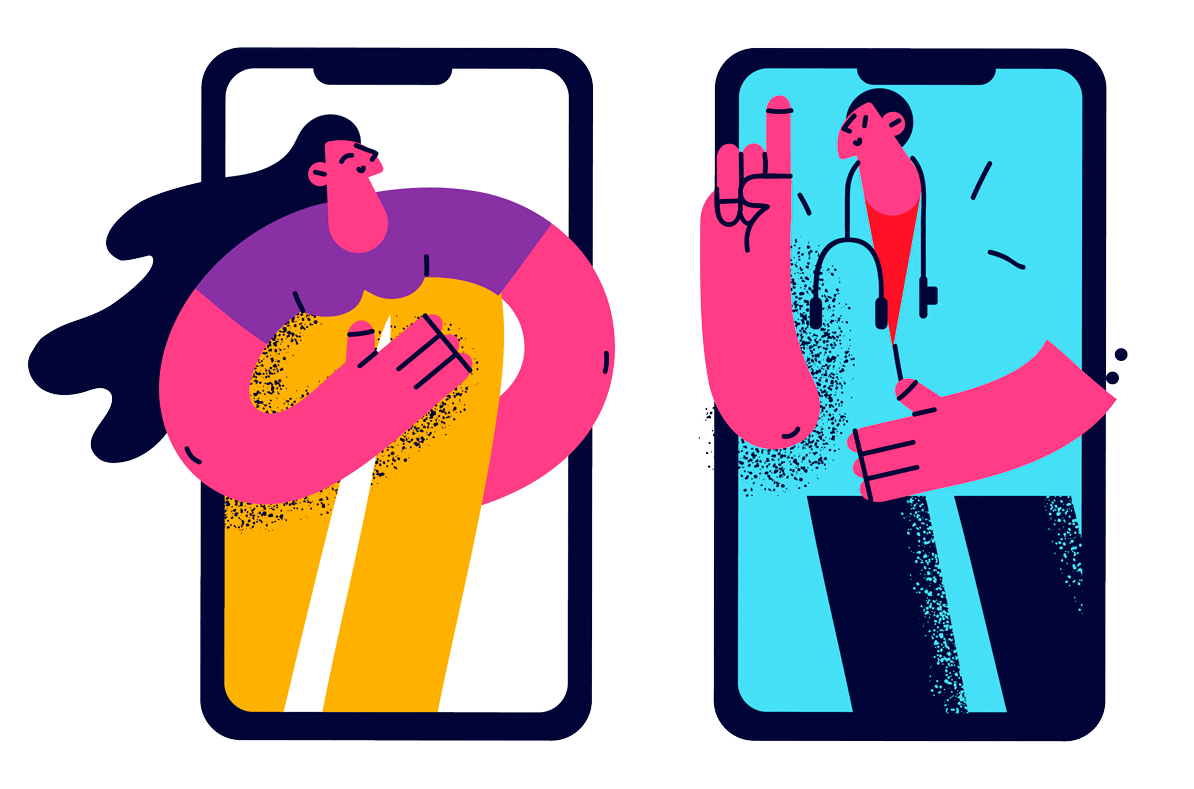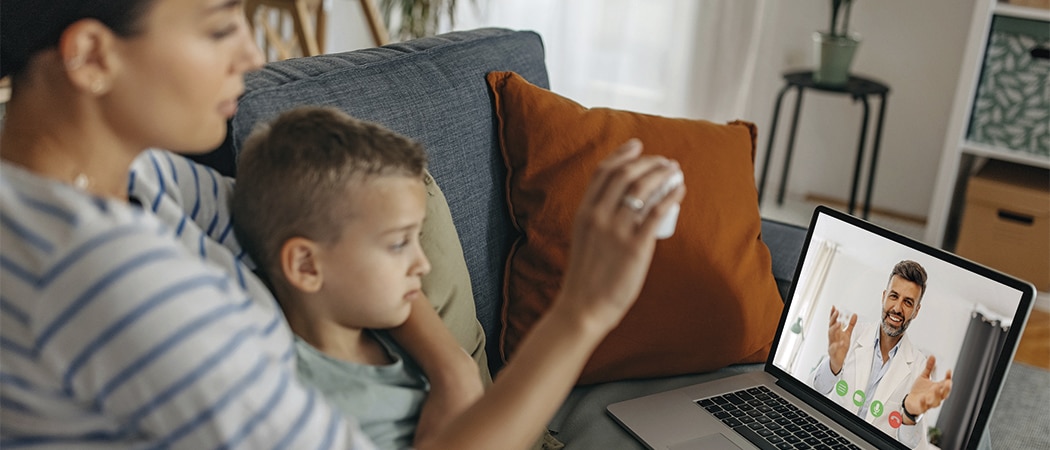Today’s hospitals will be tomorrow’s “homespitals”
Telemedicine has arrived, and it’s here to stay. According to data from a McKinsey report on the growth of this area, the use of remote medical services peaked in April 2020, coinciding with the lockdown measures put in place across many countries during the pandemic. The data suggests that primary care appears to have largely shifted away from medical centers to the home, although this is by no means a new trend.
DOUBLE
the population over the age of 80 by 2050.
60%
of Savia users are exposed to telemedicine for the first time.



Back in 2016, the World Economic Forum coined the term homespitals, a term that MAPFRE has included as one of the major trends for the future of health in its report The Health of Tomorrow: Five trends that will define the future of the sector, presented in collaboration with Accenture at the 4YFN event dedicated to startups held as part of the 2022 Mobile World Congress. There are a series of factors behind this shift. First, the saturation of public health systems and the slow adaptation of infrastructures to population growth in urban areas. Second, population aging: in Europe’s richest countries, the population over 80 years of age will double between now and 2050. This contrasts significantly when compared to the working-age population, which is much smaller. Third, the need for public and private healthcare providers, to alleviate operating costs to accommodate the prices of new treatments. Last but not least, the importance of restoring close, high-quality and humane treatment to health care, qualities which have deteriorated significantly in recent years after the pandemic.
“It is difficult to replace face-to-face care with remote care. But Covid-19 changed everything. There were many heroes in the healthcare sector, both those who were in the medical centers day in and day out and those who, even when under lockdown, supported society through Savia, MAPFRE’s telemedicine platform. 60% of Savia’s users started their first experience with telemedicine during lockdown,” explained Pedro Díaz Yuste, the company’s General Manager.
New challenges facing the service
This decentralization of health care poses a series of new challenges. On the one hand, health care providers, including insurance companies, must ensure proper compliance with treatments, so it’s vital to establish control solutions that respect patients’ privacy. This challenge may result in the creation of new business models where patients benefit.
On the other hand, the logistical challenges involved in the supply of medicines, the delivery of medical equipment and face-to-face home visits are challenges that cannot be underestimated. The decentralization of the health system not only involves connecting doctors and patients remotely. At present, there are a variety of remote diagnostic formulas that facilitate this process.
In relation to telemedicine, there are new forms of digital therapy that increase the quality of service and at the same time contribute to alleviating the scarcity of resources. So-called “self-service health” solutions like the one proposed by Koa Health, a Spanish startup specializing in digital mental health, which uses artificial intelligence to offer customized programs that the user then works on by themselves. In this case, the doctor monitors the evolution of indicators and watches for possible warning signs that require intervention. Finally, there are an infinite number of patient monitoring solutions, such as Donisi, a medical technology company that provides in-home medical monitoring of multiple cardiopulmonary parameters, helping to optimize the care received by patients with congestive heart failure and other chronic illnesses.
Another example is Acurable, another startup dedicated to medical devices whose products include AcuPebble, based on innovative acoustic sensors capable of capturing biosignals containing patient information. The startup is a pioneer, having created the first medical device to obtain the CE mark for the diagnosis of obstructive sleep apnea.
At MAPFRE, we use Savia, the digital health services platform. After almost four years in the Spanish market, it has more than 420,000 users and was visited more than five million times in the last year. This platform offers a wide range of services and a medical directory made up of more than 30,000 professionals practicing 42 medical specialties. Savia users can undergo medical consultations easily, even from their cell phones, from where they can also purchase products and services online, and choose between different payment methods: per service purchased or through subscription plans. Savia also offers the option of subscribing to a customized plan for companies.
At MAPFRE, we have Savia, the digital health services platform.
4 years
on the Spanish market
+420.000
users
5M
visits in the past year
+30.000
specialist physicians
42
different specialties
Are we starting to see the true value of IoT?
Donisi and Acurable are two examples of innovative next-generation medical devices that monitor vital signs and biomarkers in a radically different way than ever before. It seems that IoT is finding huge opportunities in the field of home-based care.
Another example of this can be seen in Aerial, which stands out from other solutions as it is capable of monitoring the well-being of elderly users without the need for using portable devices enhance the feeling of control or reliance; rather, it uses Wi-Fi technology and its waves. As a non-invasive solution, sign-up rates are higher and there is no need to change the user’s surroundings.
What is the outlook for 2030?
According to an article written for the World Economic Forum by Melanie Walker, co-chair of the Neurotechnology & Brain Science Future Council and professor of Neurology and Neurological Surgery at the University of Washington, “the days of patients dying while they wait for an organ donor will soon be over. Organs, tissues and supporting structures like bones or ligaments will be biologically 3D-printed on demand. Rates of traumatic injury are falling and will continue to decline as we introduce driverless cars and robot workers for risky tasks. And in reality: 80 is the new 60, with all of the regenerative options on the horizon.”

Dr Walker believes that by 2030 “the very nature of illnesses will have been changed even further by technology. So changed, in fact, that we might have fewer illnesses to manage.”
The fourth industrial revolution will lead to humans living longer and healthier lives.
Dr Walker believes that by 2030 ”the very nature of illnesses will have been disrupted further still by technology. So disrupted, in fact, that we might have fewer diseases to manage.” According to these experts, the fourth industrial revolution will lead to humans living longer and healthier lives. Some hospital practices could even disappear, resulting in hospitalization becoming much more volatile in nature, although not in 2030, in the near future.
Thanks to all the progress being made with mobile technology, it is expected that, rather than obtaining medications at a pharmacy, our own device will receive the necessary information for us to later print a list of personalized pharmaceutical products at home. All this would occur in a matter of minutes, speeding up the ability of patients to get the medication they need. Bearing all of this in mind, will today’s hospitals end up being replaced by homespitals in the future?




